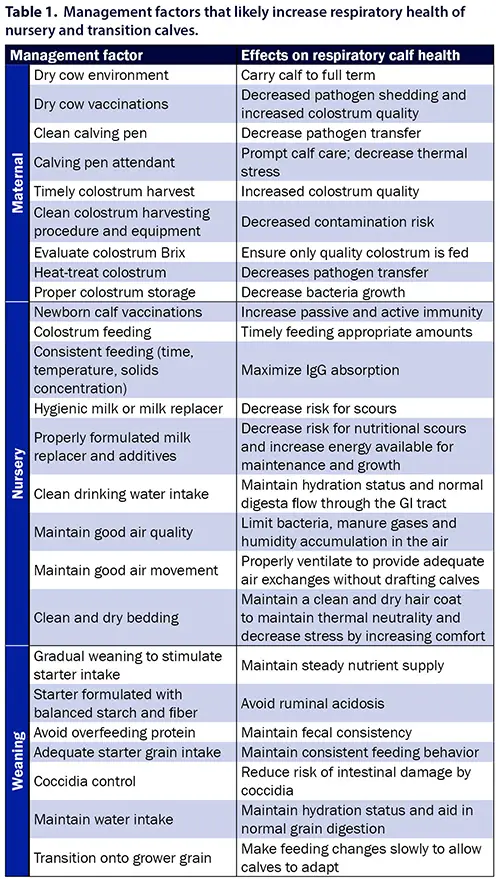
Protect the gut to protect the lungs
 By Dr. Noah Litherland, Vita Plus dairy technical services
By Dr. Noah Litherland, Vita Plus dairy technical services
Respiratory disease is one of the primary challenges to successful heifer calf development. Maintaining intestinal integrity (protecting the gut) appears to be one path to protecting the lungs and decreasing respiratory disease risk. Thus, one goal of calf nutrition is to maintain intestinal integrity.
Intestinal epithelium – the tissue that lines a calf’s intestines – is the first protective barrier to help keep external pathogens entering the body via the small intestine. Integrity of the intestinal epithelium ensures proper nutrient absorption while avoiding pathogen entrance into blood and circulating to organ systems such as the respiratory tract. Interactions between intestinal integrity and respiratory disease are not completely understood as maternal, colostrum, nutrition, immune, environmental, pathogen, management, calf age and calf genetic variables contribute to interactions of intestinal integrity and respiratory disease.
A working hypothesis of the effect of intestinal leakiness on respiratory disease risk is described in Figure 1. A healthy calf is challenged with the presence of pathogens (viral, bacterial and protozoal) and/or experiences nutritional scours. Irritation of the intestinal epithelium decreases intestinal barrier function by decreasing integrity of junctions of intestinal cells and increasing inflammation or damage to cells.

It is plausible that short-term nutrient absorption could be compromised depending upon the severity of intestinal tissue damage. The immune system requires energy and protein to function and will pull nutrients away from growth due to increased maintenance costs. Calves with scours often experience dehydration, which decreases efficiency of immune protection and can increase risk of severity and duration of respiratory symptoms. A stress response often results in increased production of stress hormones and immune signals, which some pathogens can sense, and results in expression of genes associated with virulence to take advantage of an opportunistic situation.
Some pathogens can invade past the intestinal barrier, enter the blood stream and damage lung tissue. Intestinal damage can result in flushing of fluids, overgrowth of bacteria, disruption of normal digestion, and increased severity and duration of scours. Expelling of undigested milk and fluid in scours can decrease the quality of the calf’s environment due to soiled bedding, increased gas production, and greater bacteria growth in the bedding.
Maintaining respiratory health in calves has a greater impact when calves are managed in groups indoors versus calves managed outdoors in individual hutches. Shared air space and closer contact has the potential to compound the effects of respiratory disease.
Calf age and life events are correlated with risk of leaky gut. Research data suggests day 7 to 14 is the age when calves experience increased pathogen load and potential for intestinal inflammation and leaky gut. Weaning is also a common age where intestinal integrity can be compromised due to changes in feeding and management that can pose as large of a risk to intestinal integrity as that experienced in the early nursery phase.
Areas of opportunity to increase intestinal integrity in nursery calves are described in Table 1.

In summary, when troubleshooting respiratory challenges, consider both intestinal and respiratory health as factors impacting outcomes.
| Category: |
Animal health Calf and heifer nutrition Colostrum management Sanitation Starting Strong - Calf Care |

